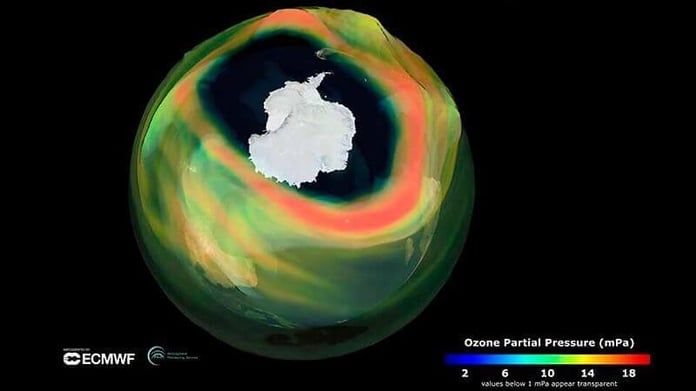
The hole in the ozone layer above Antarctica is one of the largest and deepest in the last 15 years, according to the World Meteorological Organization (WMO). It usually begins to grow in August and peaks in October, but this year, peaked at 24 million square kilometers and is now 23 million square kilometers , which means that the hole is larger than the average for the last decade and spans most of Antarctica .
“With the sunlight returning to the South Pole In recent weeks, we have seen continued ozone depletion in the area. After the unusually small and short-lived ozone hole in 2019, which was driven by special weather conditions, we are seeing quite a large increase once again this year, confirming that we must continue to apply the Montreal Protocol that prohibits the emissions of chemical substances that deplete the ozone layer “, as clarified Vincent-Henri Peuch , director of Copernicus Atmosphere Monitoring Service (CAMS ) of the EU in ECMWF .
Is it something negative?
It is not necessarily a symptom of climate evolution or climate emergency facing our planet. The great ozone hole has been driven by a strong cold polar vortex and will not be a permanent state. This usually fluctuates naturally in size each year, reaching a maximum between mid-September and mid-October , as we have discussed, and it is likely to return to normal later this year.
“There is great variability in the extent to which ozone hole events develop each year. He 2020 ozone hole looks like 2018 , which was also a pretty big hole, and it’s definitely at the top of the pack for the last fifteen years or so,” he continues.
So no, this year’s big gap would not be driven by polluting gases but for climatic reasons.
Ozone depletion is directly related to the temperature in the stratosphere, which is the layer of the atmosphere located between about 10 km and about 50 km in altitude . This is because polar stratospheric clouds, which play an important role in the chemical destruction of ozone, only form at temperatures below -78 ° C . It is precisely the ozone layer that protects the Earth and human beings from the sun’s ultraviolet rays. It acts as a shield for our plant, absorbing much of the sun’s harmful ultraviolet rays.
Concern about the hole in the ozone layer became one of the biggest environmental concerns of recent times when a team of scientists discovered a hole in the layer above the South Pole in the 1970s and 1980s. The coating was being worn away by man-made chemicals such as refrigerants or solvents. The world acted quickly and efficiently.
Fortunately, thanks to the Montreal Protocol closed a global agreement to protect the ozone layer by phasing out ozone-depleting substances . So far, it is the only treaty of the UN which has been ratified by all member states.












